#Melursus ursinus
Text
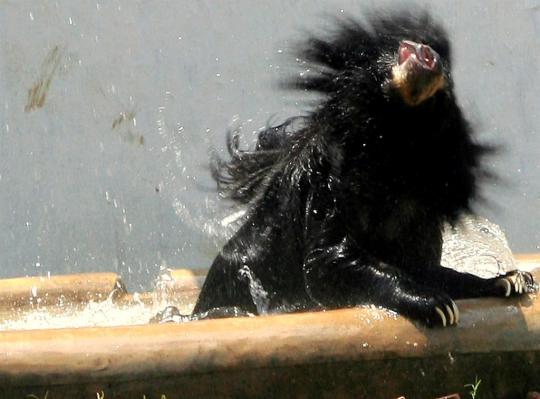
It is Feels Fabulous Friday! Treat yourself.
Y'all made it to the best day of the week.
Make your weekend amazing. Lift each other up.
Thanks for hanging out with us. 🤎
- - - - - - - - - - -
"Sloth bear" by Scorius is licensed under CC BY 2.0.
#sloth bear#bear#indian sloth bear#friday#friday bear#cute#animals#nature#wildlife#wildness#india#Melursus ursinus#gimmedemtermites
178 notes
·
View notes
Text
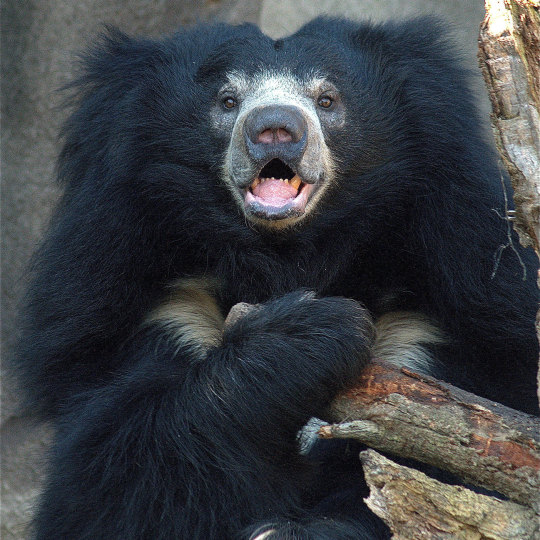
Sakar, a sloth bear (Melursus ursinus) at the Cleveland Zoo, Ohio, USA
by ucumari photography
#sloth bear#bears#melursus ursinus#melursus#ursidae#carnivora#mammalia#chordata#captive animal#cleveland zoo
70 notes
·
View notes
Video
youtube
ENDANGERED SLOTH BEARS AT MYSORE ZOO (H D )
#youtube#Bears#Sloth Bears#Mysore Zoo#Animals In Mysore Zoo#Mammal#Omnivore#Shaggy Coat#Melursus ursinus#Black Bear#V Shaped Mark On Chest#White Nozzle#Sharp Claws#Vulnerable Species#Indian Bear#Indian Animals#Jungle Large Animal#Labiated Bear
1 note
·
View note
Text
Confrontation

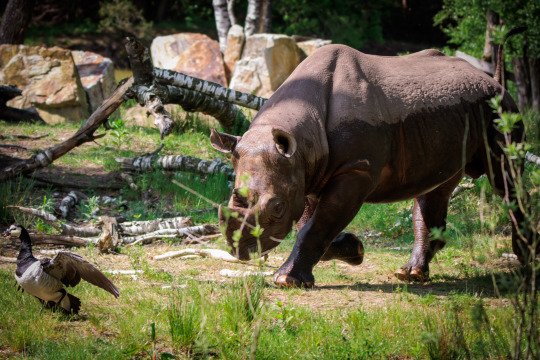
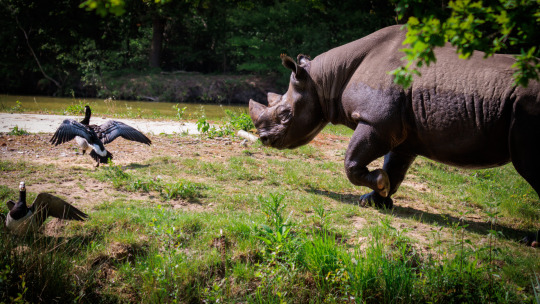


#BeekseBergen#Photography#Photo#Zoophotography#canon#eos#zoo#animal#animals#animalphotography#Rhino#Rhinocerotidae#Rhinos#Melursus#ursinus#sloth#bear#slothbear#bears#Asian#small-clawed#otter#Aonyx#cinereus#otters#Bird#Birds
10 notes
·
View notes
Text
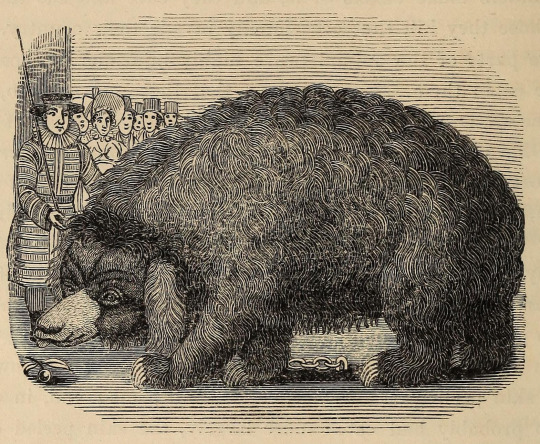
Sloth bear (Melursus ursinus)
A Natural History of British and Foreign Quadrupeds. Written by James H. Fennell. 1843.
Internet Archive
387 notes
·
View notes
Text
CoD Baddies as Bears!
What if the bad guys were also bears! Part 3
See part 2 and 1 for 141 and good guys as bears
Even more bear facts because bears are love, bears are life. 🐻🐻❄️🧬
Makarov: Ussuri Brown Bear "Russian Grizzly Bear"
Ursus arctos lasiotus
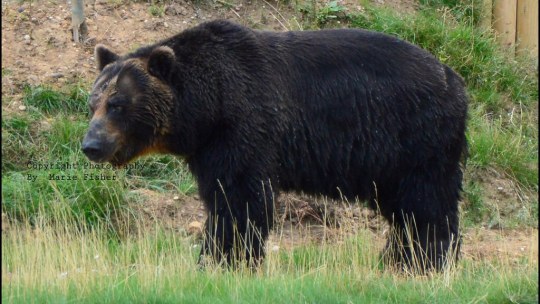
Also known as the Ezo Brown bear or Black Grizzly bear, this subspecies of Eurasian Brown Bear is one of the largest, with some individuals approaching the Kodiak Bear in size.
Similar to the Kamchatka Brown Bear, it differs with an elongated skull, longer nasal bones, elevated forehead and is darker in colour with some individuals being pure black.
Siberian (Amur) tigers and other bears are it's only natural predators, with documented tiger and bear interspecific competitions. Ussuri brown bears will often scavenge tiger kills and or kill smaller tigers, while Tigers are known to hunt young and sub-adult bears (bears making a significant portion of their diet).
Graves: Louisiana Black Bear
Ursus americanus luteolus

A subspecies* of the American Black Bear (U. a. americanus), the Louisiana Black Bear has been historically found in Louisiana, Mississippi, East Texas and Arkansas.
It is not substantially different from the American Black Bear, though it has a longer, flatter, narrower skull and larger molars in comparison. It's colouration is typically black, though some individuals have been known to be brown/red-brown cinnamon. It is Louisiana's official state mammal.
*The validity of this subspecies has been repeatedly debated.
Valeria: Sloth Bear "Indian Bear"
Melursus ursinus
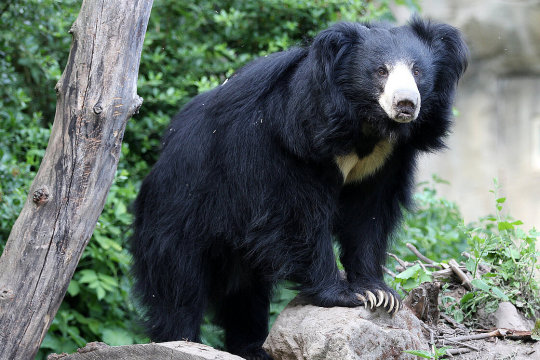
A native species to the Indian Subcontinent, this medium sized bear feeds on ants, termites and fruit. It is also called the "labiated bear" due to its long lower lip and palate which is used to eat insects.
It's fur is pure black aside from the white "Y" or "V" patch on its chest though this can be absent in some individuals. They are similar in size with the Asian Black Bear though distinguished with it's shaggy mane, white 'sickle' claws, and rangier build.
This species is the most aggressive to humans with the largest number of recorded attacks due to a combination of close human cohabitation and a theorised predisposition to aggressive behaviour from constant attacks by tigers, leopards, rhinos and elephants.
Captain Williamson in his Oriental Field Sports (1819) wrote of how sloth bears rarely killed their human victims outright, but would suck and chew on their limbs till they were reduced to bloody pulps.
They are not known to be man eaters despite attacking humans. One individual in Mysore (Mysuru), India was recorded to have killed at least 12 people and mutilated 24 before it's death in 1957.
Shepherd: Koala "Koala Bear"**
Phascolarctos cinereus
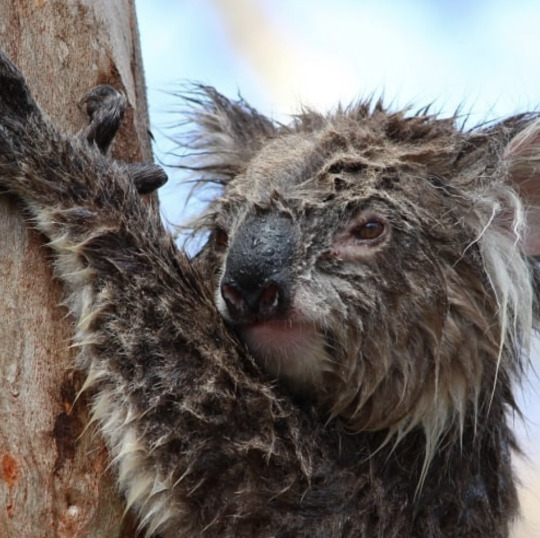
**not a bear
An arboreal marsupial native to Australia that feeds primarily on Eucalyptus leaves. Koalas are asocial with bonding only taking place between mothers and dependant offspring. They are largely sedentary and will sleep upwards to 20 hours a day.
The word "koala" came from the Dharug word "gula" - no water. The 'u' sound was originally written phonetically as 'oo' and then became 'oa'. The three syllable pronunciation may be erroneous as a result.
White settlers adopted the 'koala' indigenous loan word in reference to the animal, where it was also referred to as, the "native bear", or the "koala bear" due to its supposed bear-ish resemblance.
+
Info from Wikipedia. Please let me know if I screwed up somewhere. 🐻
#cod mwiii#cod mwii#call of duty modern warfare#call of duty#vladimir makarov#cod makarov#phillip graves#graves cod#valeria garza#valeria mw2#general shepherd#bears#bear facts#cod mw2#cod mw3
41 notes
·
View notes
Text
Types of Bears:
Black Bears:
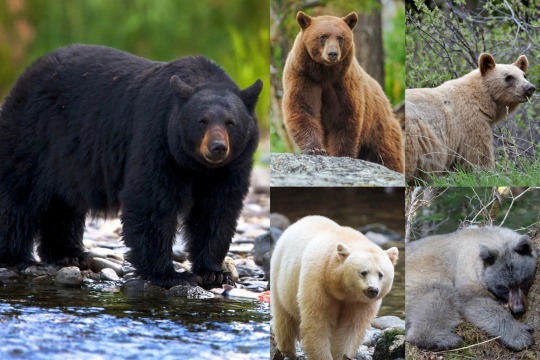
The American Black Bear (Ursus americanus) is a medium-sized bear species native to (you guessed it!) North America. Black Bears can be found in the forests as south as Florida and as North as Alaska. Being so widely distributed it’s no surprise that their population is twice the size of all the other bear species combined! Males generally weigh up to 500lbs, while females weigh up to 300lbs. The heaviest bear on record was found in North Carolina in 1998, weighing in at 880 lbs. Despite what their name may lead you to believe, they actually come in many different colors! They can be cinnamon, blonde, kermode or glacier bears as well as black! These bears are omnivores but their diet varies greatly depending on season, location, etc. They may eat berries, carrion nuts, insect larvae, fish, grasses, and small mammals. Although an adult Black Bear is quite capable of killing a person, they typically avoid any interaction or confrontations with humans. Attempts to relocate American black bears are typically unsuccessful, as the bears are able to return to their home range, even without familiar landscape cues.
Brown Bears:

The Brown Bear (Ursus arctos) is a species of large bear found across North America and Eurasia. In North America, the populations of brown bears are called grizzly bears, while the even larger subspecies that inhabits the Kodiak Islands of Alaska is known as the Kodiak bear. The largest populations are are in Russia with 120,000, the United States with 32,500, and Canada with around 25,000. Males generally weigh up to 600lbs , while females weigh up to 350lbs with the largest Brown Bear on record was a Kodiak that weighed 1,656 lbs. The Brown Bear is omnivorous and has been recorded consuming the greatest variety of foods of any bear. They may eat fish, carrion, insects, fungi, berries, flowers, nuts and small-medium sized mammals. Brown Bears do go out of their way to avoid humans but are much more likely to attack than Black Bears. They are formidable indeed, with females being extremely quick to aggression when with cubs.
Sloth Bear:

The Sloth Bear (Melursus ursinus), also known as the Indian bear, is a medium-sized bear species native to the Indian subcontinent. Their population inhabits the forests and grasslands of India, the Terai of Nepal, Bhutan and Sri Lanka. Males generally weigh up to 380lbs, while females weigh up to 210lbs with the biggest Sloth Bear on record weighing 423 lbs. Sloth Bears are considered myrmecophagous, meaning they feed on ants and termites. It has also been called the “labiated bear" because of its long lower lip and palate used for sucking up insects. They also may eat fruits and flowers. The Sloth Bear is one of the most aggressive bears alive which is likely due to the large human populations living so close to their habitats. These attacks are pretty frequent and if not fatal, the victim is often left terribly disfigured, as the bear strikes at the head and face.
Andean Bear:

The Andean Bear (Tremarctos ornatus) also known as the Spectacled Bear is a species of medium-sized bear native to the Andes Mountains in western South America. It is the only living species of bear native to South America, and the last remaining short-faced bear. Males generally weigh up to 340lbs, while females weigh up to 190 lbs with the largest Andean Bear on record weighing 440 lbs. Andean Bears are omnivores, eating small mammals, birds, and berries with their favorite foods being fruits and bromeliads. There have never been any reported attacks on humans.
Sun Bear:

The Sun Bear (Helarctos malayanus) is a species of small bear native to the tropical forests of Southeast Asia. They can grow up to be 150 lbs with males being 1/3 larger than the females. Sun bears get their name from the characteristic cream coloured chest patch! They are the most arboreal natured of all the bears with long claws fit for climbing trees. They feed omnivorously on insects, berries, fruits and mammals. They do not seem to hibernate, possibly because food resources are available the whole year throughout the range. Sun bears are shy and reclusive animals, and usually do not attack humans unless provoked to do so.
Polar Bear:

The Polar Bear (Ursus maritimus) is a species of large bear native to the Arctic Circle. Males generally weigh up to 1,200lbs, while females weighing up to 700lbs with the largest Polar Bear record weighing 2,209 lbs. Although most polar bears are born on land, they spend most of their time on the sea ice. Their scientific name means "maritime bear" and derives from this fact. Polar Bears are hypercarnivorous feeding primarily on ringed seals, but will also eat bearded seals, harp seals, hooded and harbor seals. Larger prey species such as walrus, narwhal and beluga are occasionally hunted. Due to location, attacks on humans are infrequent but potential chances of survival are very low. “If it’s black: fight back, if it’s brown: lay down, if it’s white: goodnight.”
(I'm experiencing a minor bear hyperfixation, if you can't tell!!! I hope this was beary educational for you ROFLROFLROFL)
#bear#bears#educational#grizzly bear#polar bear#black bear#spirit bear#sun bear#sloth bear#spectacled bear
107 notes
·
View notes
Photo

How is the sloth bear’s (Melursus ursinus) long hair used for protection?🐻 When this animal goes after termites, a key food source, longer hair helps prevent bites! It has another safeguard: when chowing down on insects: it’s also able to completely close its nostrils to avoid unwanted visitors from entering its nose. What’s more, the bear’s coat is also helpful when females carry cubs on their backs, giving the little ones something to hold onto. Photo: Cloudtail the Snow Leopard, CC BY-NC-ND 2.0, flickr #AnimalFacts #SlothBear #nature #dyk #bears https://www.instagram.com/p/CfP7KkILlhd/?igshid=NGJjMDIxMWI=
232 notes
·
View notes
Note
Mowgli was such a little shit for ditching his wolf family to go fuck around in the jungle.
Don't know that I'll ever understand Rudyard Kippling's ability to fly under everyone's radar in terms of racism but Dr. Seuss gets canceled because the guy drew propaganda for the US during WW2.
I have nothing against either one, much like Twain the things in question are very much a product of their time and shouldn't be subjected to 21st century standards, but the dude wrote a whole thing called "White Man's Burden" to try to inspire American Imperialism to go to the Philippines and bring civilization to the people there.
Commented several times about how similar it is to the woke white people trying to explain to various minorities who don't agree with their agenda that they know better than them and as white people of privilege they will lead the way so they may at last achieve the equality they deserve.
Yes this is Breitbart, shut up there's video so there's not really any way to lie.


This was 100% not what you were looking for I'm sure, sorry bout that, you triggered one of my pet peeves.
And yes he was a little bitch, but to be fair if I could hang out with Baloo and nap on a fat Melursus ursinus (sloth bear) tummy it would be tough to resist.
22 notes
·
View notes
Text
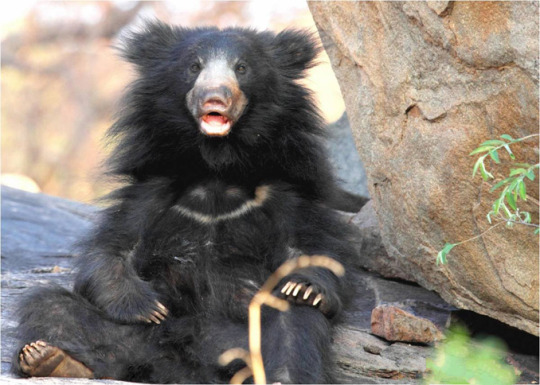
🎉 IT'S 2024!!! 🎉
New Year! New Bears! New Memories! It's going to be great.
We're so glad you're here. You mean the world to us.
Happy New Year :)
- - - - - - - - - -
"File:Indian Sloth Bear.jpg" by Samadkottur is licensed under CC BY-SA 4.0.
#sloth bear#bear#indian sloth bear#friday#friday bear#cute#animals#nature#wildlife#wildness#india#Melursus ursinus#gimmedemtermites
366 notes
·
View notes
Text
Animal Behavior Insights
"Whispers in the Wilderness: Insights into Indian Wildlife Animal Behavior"
Introduction
India, a land of diverse landscapes and rich ecosystems, is home to a mesmerizing array of wildlife. From the majestic Bengal tiger prowling the dense jungles to the graceful Indian elephant wandering the vast grasslands, each species exhibits unique behaviors that offer a captivating glimpse into the intricate tapestry of Indian wildlife. In this blog post, we delve into the heart of the subcontinent, exploring the behavioral insights of some of India's iconic wildlife.
Bengal Tiger: Master of Stealth
The Bengal tiger, Panthera tigris tigris, reigns as India's apex predator, navigating the lush forests with unmatched grace and power. The behavioral nuances of this magnificent big cat are a subject of fascination for wildlife enthusiasts and researchers alike.
One striking behavior of the Bengal tiger is its exceptional stalking and ambush prowess. These cats are masters of stealth, utilizing the dense vegetation to get within striking distance of their prey. Patiently observing their surroundings, they display a keen understanding of the art of surprise, an essential skill for survival in the competitive world of the Indian jungles.
In addition to their solitary hunting techniques, Bengal tigers also exhibit complex social behaviors, particularly during the mating season. The courtship rituals and interactions between individuals reveal a side of these big cats that goes beyond their reputation as solitary hunters.
Indian Elephant: Social Bonds and Emotional Intelligence
In the sprawling landscapes of India, the Indian elephant, Elephas maximus indicus, emerges as a symbol of strength, intelligence, and social complexity. These gentle giants display remarkable behaviors that highlight their strong sense of community and emotional intelligence.
One notable aspect of elephant behavior is their intricate social structure. Herds, led by a matriarch, consist of females and their calves, forming a tightly-knit family unit. Observing the communication within the herd, including vocalizations, body language, and tactile interactions, unveils the depth of their social bonds.
Moreover, elephants showcase empathy and mourning behaviors, particularly in response to the loss of a fellow herd member. Studies have documented elephants displaying signs of grief, such as lingering around the remains of a deceased companion and showing a subdued demeanor. These insights into the emotional lives of elephants challenge preconceived notions about the depth of feelings within the animal kingdom.
Indian Peafowl: Dance of Elegance
In the grassy meadows and open spaces of India, the Indian peafowl, or peacock (Pavo cristatus), captivates with its vibrant plumage and extravagant courtship displays. The peacock's behavior is a dance of elegance and flamboyance, designed to attract a mate.
During the breeding season, male peafowls unfurl their iridescent tail feathers into a breathtaking display, creating a mesmerizing fan of colors. This behavior, known as "train-rattling," is accompanied by intricate footwork and a series of calls. The purpose is to court and woo peahens, with the most elaborate displays often resulting in successful mating opportunities.
The peacock's courtship ritual is not only a visual spectacle but also a fascinating example of how certain behaviors in the animal kingdom have evolved to ensure the continuation of their species.
Indian Sloth Bear: Nurturing Bonds
Venturing into the scrub forests of India, the Indian sloth bear (Melursus ursinus) introduces us to a fascinating aspect of parental care and nurturing behavior. These bears, characterized by their shaggy fur and distinctive markings, exemplify a close-knit family structure.
Sloth bear mothers display remarkable devotion to their cubs, often carrying them on their backs or cradling them in their arms. This protective behavior extends beyond physical proximity, as mothers actively teach their cubs essential skills for survival, such as foraging and climbing. The strong maternal bonds observed in sloth bears emphasize the importance of family dynamics in the lives of these creatures.
Conclusion:
The behavioral insights into India's wildlife offer a profound appreciation for the complexities of the natural world. From the stealthy pursuits of the Bengal tiger to the emotional intelligence of the Indian elephant, each species contributes to the rich mosaic of Indian biodiversity.
As we observe and study these behaviors, it becomes evident that the lives of animals are marked by intelligence, social connections, and emotional depth. Preserving the habitats that support these remarkable creatures is not just a matter of conservation but also a commitment to safeguarding the intricate behaviors that make India's wildlife a source of wonder and inspiration. In understanding and respecting the behavioral intricacies of our fellow inhabitants on this planet, we foster a deeper connection with the natural world and cultivate a shared responsibility for its preservation.
2 notes
·
View notes
Text
Of the eight species of bears, only three species are found in more than five countries, and only two are found in more than eight
The top two are both found in more than double that, with the moon bear in eighteen countries and brown bear in thirty seven
Giant panda (Ailuropoda melanoleuca): China (1)
Black bear (Ursus anericanus): Canada, the US, and Mexico (3)
Polar bear (Ursus maritimus): Greenland, Canada, the US, and Russia (4)
Sloth bear (Melursus ursinus): Sri Lanka, India, Nepal, and Bangladesh (4)
Spectacled bear (Tremarctos ornatus): Colombia, Venezuela, Ecuador, Peru, and Bolivia (5)
Sun bear (Helarctos malayanus): India, Bangladesh, Burma, Thailand, Laos, Kambodia, Vietnam, Indonesia, and Malaysia (8)
Moon bear (Ursus thibetanus): Iran, Afghanistan, Pakistan, India, Nepal, Bhutan, Bangladesh, Burma, Thailand, Laos, Kambodia, Vietnam, Taiwan, China, Russia, North Korea, South Korea, and Japan (18)
Brown bear (Ursus arctos): Spain, France, Italy, Austria, Slovenia, Croatia, Greece, Bulgaria, Romania, Ukraine, Slovakia, Belarus, Latvia, Lithuania, Sweden, Norway, Finland, Russia, Georgia, Azerbaijan, Armenia, Iraq, Iran, Turkmenistan, Kazakhstan, Uzbekistan, Kirjizstan, Tajikistan, Afghanistan, Pakistan, India, Nepal, Bhutan, China, Mongolia, North Korea, and Japan (37)
#original broth#i love bears so fucking mich#brown bear#black bear#moon bear#polar bear#sun bear#sloth bear#spectacled bear#giant panda#bear animal#data
1 note
·
View note
Text
"The Real Baloo"
2019

Sloth Bear (Melursus ursinus)
The Sloth Bear is most assuredly the bear that inspired Kipling's Baloo, yet he is not accurately depicted as such in any of the Jungle Book's screen adaptations (at least not that I know of). A shame, since that fur and those ears would make for quite a character.
#sloth bear#bear#carnivora#animals#animal art#wildlife#wildlife art#realism#photoshop#art#artists on tumblr#mexican artist#autistic artist#dartxo
0 notes
Photo

Sloth bear (Melursus ursinus)
Photo by Sylvain Cordier
#sloth bear#melursus ursinus#melursus#ursinae#ursidae#arctoidea#caniformia#carnivora#carnivoramorpha#ferae#scrotifera#laurasiatheria#boreoeutheria#eutheria#mammalia#tetrapoda#vertebrata#chordata
82 notes
·
View notes
Text
No offense, because I have full respect for scientists, but they REALLY could have done a more creative job naming bear species. I don’t know Latin, just enough basic Latin-derived English words to know what these names mean, but come on! Bears are beautiful, scary, funny, intelligent, powerful, revered and feared across cultures, and you’re gonna honor them with the most basic names? Latin makes sound all fancy and official until you break it down and think of what they all mean.
Brown bear: Ursus arctos. The Latin word for bear and the Greek word for bear. That’s a bear bear all right!
Black bear: Ursus americanus. American bear! (Let’s ignore the fact that four species of bears are native to the Americas. This one is the most American! It votes in every election, drives an SUV, and owns a gun!)
Polar bear: Ursus maritimus. Means sea bear! That’s fine, I guess. It is the most water-loving bear. But for an animal as majestic and unique and steeped in legend as a polar bear, this kinda rings a little flat.
Asiatic black bear: Ursus thibetanus. Tibetan bear. Interestingly, this guy also lives in India, Korea, China, Russia, Japan, Iran, Pakistan, Nepal, Myanmar, and Taiwan, and probably some other countries I’m forgetting.
Spectacled bear/ Andean bear: Tremarctos ornatus. Okay, this is the only living bear in the genus Tremarctos and I’m not actually sure what Tremarctos means except obviously arctos means bear, but I know ornatus means fancy! This is the fancy bear! All you other plebeian bears go home. Normal bears eat salmon and berries? This one eats caviar and artisanal chocolate-dipped organic strawberries with edible gold flakes and a flute of champagne.
Sloth bear: Melursus ursinus. This means “black bear bear.” As opposed to the brown bear bear we posted above. COME ON, this bear species is so interesting, and this is the best they can do namewise? It has way shaggier fur than other bears, it primarily eats insects with a muzzle adapted to sucking up bugs, it makes over 25 different vocalizations, it’s straight-up funny-looking, and the best you can do is “black bear bear” when there are four (and a half) other bear species that happen to be black?
Malayan sun bear: Helarctos malayanus. That means “Malayan sun bear.” Exactly what it says on the tin. I guess I can’t be mad at that one. That said, like the Asiatic black bear, they have a huge range that covers quite a lot of Asia.
Giant panda: Ailuropoda melanoleuca. This means “black and white cat-foot.” Okay, I get the black and white part. I even get the “cat” comparison in the name. Apparently the Chinese name for a giant panda means “big bear-cat,” and they have pupils like cats. BUT WHY THE CAT-FOOT?? Black bears’ paws are actually more like cats’ than pandas are. Panda paws have an extra wrist bone that almost functions like a a thumb and lets them grasp bamboo.
What’s an animal you love whose scientific name just doesn’t do them justice?
51 notes
·
View notes
Text

❊ MELURSINAEON!
a gender which is connected to sloth bears! ⊹ ⁺
flag/coined by me! sunset of beargender!
[[ IMAGE ID: a flag with 3 circles in the background, with a medium brown circle in the center, a light brown circle, and an off white circle on the outside. the flag has a coffee brown stripe and square in the center, and an image of a sloth bear. ID OVER ]]
⊹ ⁺ ETYMOLOGY!
— “melursin” from melursus ursinus, the scientific name for bear!

[[ DNI ID: do not interact: anti mogai, anti xenogenders, anti neopronouns, terfs/swerfs, truscum/transmed, anti kin, nsfw blog, pro ddlg/ageplay, anti blm. ID OVER ]]
#melursinaeon#nico’s terms!#mogai#mogai flag#mogai label#mogai post#mogai term#mogai gender#xenogender#xenogender flag#xenogender coining#xenogenders
19 notes
·
View notes